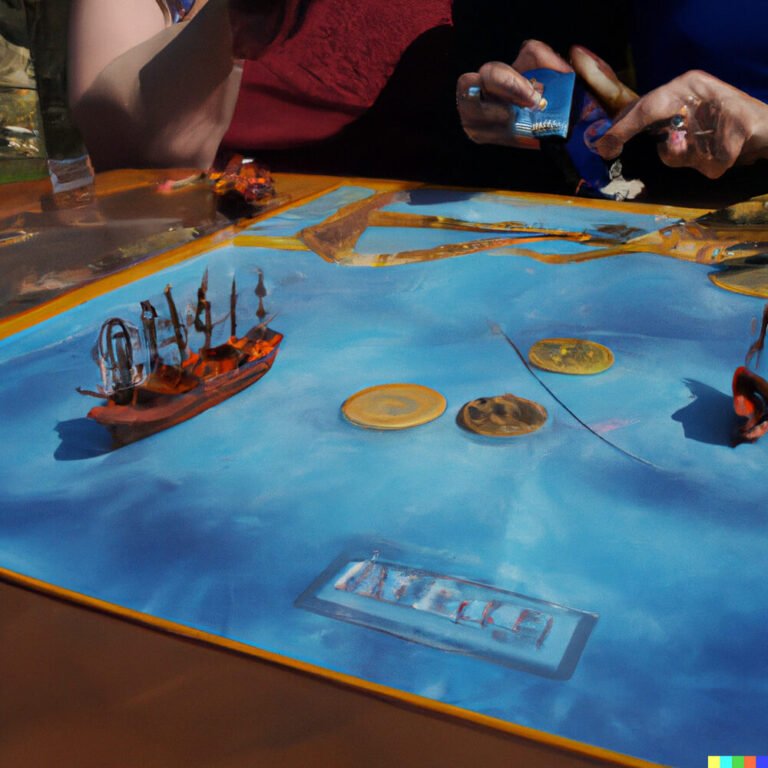Axis and Allies 1941 is a board game that allows players to step into the shoes of the Axis Powers (Germany and Japan) or the Allied Powers (United States, United Kingdom, and Soviet Union) during World War II. With its immersive gameplay and historical context, this game has become a favorite among strategy enthusiasts.
What makes Axis and Allies 1941 so appealing is its ability to recreate the strategic challenges faced by both sides during the war. From planning military maneuvers to managing resources, players must make critical decisions that can have far-reaching consequences. The game captures the tension and uncertainty of wartime decision-making, making it an engaging experience for players who enjoy strategic thinking and tactical planning.
Additionally, Axis and Allies 1941 offers a unique opportunity to learn more about World War II in a hands-on way. The historical context adds depth and realism to the gameplay, allowing players to gain insights into the strategies employed by each side as they compete for global dominance. By experiencing firsthand the trials and tribulations faced by their chosen faction, players can develop a deeper appreciation for the complexities of warfare during this pivotal time in history.
Whether you’re a history buff or simply enjoy engaging in stimulating strategic gameplay, Axis and Allies 1941 offers a thrilling experience like no other board game. In the following sections, we will delve into this game’s historical context, rules, key components, as well as strategies for both the Axis Powers and Allied Powers.
We will also explore advanced tactics and techniques to help you gain an advantage on your opponents while avoiding common mistakes along the way. So get ready to embark on an epic journey through one of history’s most significant conflicts as we dive into mastering Axis and Allies 1941.
Understanding the Historical Context
World War II was a global conflict that lasted from 1939 to 1945 and involved many countries around the world. The war resulted in significant changes to political, economic, and social structures, and it had a profound impact on the lives of millions of people. Understanding the historical context of World War II is essential for playing Avalon Hill Axis and Allies 1941 board game effectively.
One key aspect of this historical context is the division between the Axis Powers and the Allied Powers. The Axis Powers consisted primarily of Germany, Italy, and Japan, while the Allied Powers included countries such as the United States, United Kingdom, Soviet Union, and China. Each side had distinct objectives and strategies during the war, which are reflected in the gameplay of Avalon Hill Axis and Allies 1941.
Knowing about major events and battles during World War II can also enhance your gameplay experience. For example, understanding the significance of battles like Stalingrad or Midway can help you make informed decisions when playing as either the Axis or Allied powers. Additionally, having a basic knowledge of military strategies used during this time period can help you develop effective tactics in the game.
Here are some key highlights from World War II’s historical context:
- Germany’s invasion of Poland in September 1939 marked the beginning of World War II in Europe.
- Japan’s attack on Pearl Harbor on December 7, 1941 brought the United States into the war.
- The Battle of Stalingrad (1942-1943) was a turning point in favor of the Allied Powers.
- D-Day (June 6, 1944) marked the largest amphibious invasion in history with Allied forces landing in Normandy to liberate Western Europe.
By understanding this historical context, players can gain a deeper appreciation for Avalon Hill Axis and Allies 1941 board game’s simulation of World War II and make more informed decisions throughout the gameplay.
| Key Events | Date |
|---|---|
| Invasion of Poland | September 1939 |
| Pearl Harbor attack | December 7, 1941 |
| Battle of Stalingrad | 1942-1943 |
| D-Day invasion (Normandy) | June 6, 1944 |
Overview of the Avalon Hill Axis and Allies 1941 Board Game
The Avalon Hill Axis and Allies 1941 Board Game is a popular strategy game that allows players to relive the events of World War II from two different perspectives: the Axis Powers and the Allied Powers. In this section, we will provide an overview of the game and its objectives.
Objectives of the Game
The main objective of Axis and Allies 1941 is to achieve military dominance and control as many territories as possible. The game simulates the war on a global scale, with each player taking on the role of a major power during World War II. The Axis Powers consist of Germany and Japan, while the Allied Powers include the United States, United Kingdom, and Soviet Union.
Game Board
The game board represents a world map divided into territories that players must conquer or defend. Each territory has different strategic value and resources, which can contribute to a player’s overall advantage in terms of economic power or military strength.
Turn Structure
Axis and Allies 1941 follows a turn-based structure where players take alternating turns. Each turn consists of three phases: purchase phase, combat move phase, and non-combat move phase.
In the purchase phase, players can use their allocated resources to purchase units such as infantry, tanks, aircraft carriers, bombers, and more. These units are essential for building up your military forces and preparing for battles.
During the combat move phase, players can strategically move their units across territories to engage in warfare with enemy forces or capture unoccupied territories. This phase requires careful planning as it determines territorial control.
Finally, in the non-combat move phase, players can transport their units to new locations or reinforce existing ones without engaging in combat. This allows for further strategic maneuvering within the game.
By understanding these key components and rules of Axis and Allies 1941 board game, players can better navigate the game and develop effective strategies to achieve victory. In the next sections, we will explore specific strategies for both the Axis Powers and the Allied Powers to provide players with a comprehensive guide to gameplay.
Key Components and Rules of the Game
The key components of the Avalon Hill Axis and Allies 1941 Board Game include a game board, plastic miniatures representing military units, battle dice, IPC (Industrial Production Certificate) and NO (National Objective) tokens, as well as various game pieces to track different elements of gameplay such as technology development and economic status.
The game board represents a map of the world during World War II, divided into different territories that players can control. The plastic miniatures represent different military units, including infantry, tanks, submarines, aircraft carriers, and strategic bombers. These units have specific combat abilities and movement ranges that players must take into account when developing their strategies.
The rules of the game are comprehensive but can be learned relatively quickly with some practice. Each turn is divided into phases where players can perform different actions such as purchasing new units, conducting combat operations, and moving their forces across the board. The objective is for one side to achieve its specific victory conditions within a certain number of turns.
Some important rules to keep in mind are:
- Income: Each territory controlled by a player generates income at the beginning of their turn. This income allows them to purchase new units and expand their army.
- Combat: When two opposing players move units into the same territory or sea zone, combat occurs. Both sides roll dice based on their unit’s combat abilities to determine casualties. The outcome is influenced by factors such as unit type and terrain bonuses.
- Technology Development: Players have the option to invest resources in technological development during their turn. Technological advancements provide strategic advantages such as improving unit capabilities or unlocking new types of units.
- National Objectives: Each player has specific objectives they need to achieve in order to win the game. These objectives may include capturing certain territories or controlling key locations on the board.
Mastering these key components and rules is essential for success in Axis and Allies 1941. By understanding how each component contributes to the overall gameplay and formulating strategies that leverage these elements, players can gain an advantage over their opponents and increase their chances of victory.
Strategies for the Axis Powers
Germany
One of the key strategies for Germany in Axis and Allies 1941 is to prioritize the expansion of its territories. Germany begins the game already at war and with a strong military presence, so it should focus on capturing as many territories as possible early on. This will help Germany gain more income, which can be used to reinforce its military and launch further offensives.
An effective strategy for Germany is to concentrate its forces in a specific direction, rather than spreading them thin across multiple fronts. By focusing on either the Eastern or Western front, Germany can overwhelm its opponents and gain an advantage in terms of territory control. For example, if Germany chooses to invade the Soviet Union in the East, it can gradually push towards Moscow and cut off important supply lines for the Allies.
Another crucial aspect of German strategy is coordinating with Japan. Since both powers are part of the Axis alliance, their actions should be synchronized for maximum impact. One tactic often used is known as “Operation Barbarossa,” where Germany invades Russia while Japan focuses on attacking China and other Allied forces in Asia. This puts pressure on the Soviets from both sides and can quickly weaken their position.
Japan
For Japan, one of the main objectives should be gaining control over vital resources such as oil and rubber. These resources are essential for sustaining Japan’s war machine and supporting its economy. Taking control of territories like Indonesia or French Indochina not only secures these resources but also denies them to the Allied powers.
A successful strategy for Japan involves an early push into China and Southeast Asia. By rapidly expanding through these regions, Japan can accumulate more income and build a formidable navy that can challenge the Allied forces in future turns. Additionally, capturing strategic islands such as Midway or Wake Island can provide valuable air bases for launching attacks against enemy ships or establishing defensive positions.
Coordination with Germany is crucial for Japan as well. The Axis powers need to work together to maintain a balance of power against the Allies. In some cases, Japan may even consider assisting Germany in its European campaigns by launching distractions or diversionary attacks on British or American territories in the Pacific, drawing away valuable resources from the main theater of conflict.
By following these strategies, both Germany and Japan can establish a strong foothold early in the game and put pressure on the Allied powers. However, players must remain flexible and adapt their strategies based on the dynamic nature of gameplay and the actions of their opponents.
Strategies for the Allied Powers
As players take on the role of the Allied Powers in Axis and Allies 1941, they must develop effective strategies to counter the Axis Powers’ aggression and claim victory. The United States, United Kingdom, and Soviet Union each play a unique role in the game and have their own strengths and weaknesses. Understanding these factors is crucial for devising successful strategies.
The United States
The United States starts off with a disadvantage in Axis and Allies 1941, as it is not involved in the war until later rounds. However, once it joins the fight, the United States becomes a force to be reckoned with. One important strategy for the US is to focus on building up its industrial production capacity during the early rounds. Investing in technology research can also lead to significant advantages.
Once fully engaged in the war, the United States should prioritize its naval power. Building a strong navy is crucial for protecting its interests overseas and ensuring the safe transport of troops and supplies. The US can also make use of its large air force to support naval operations or conduct strategic bombing raids against enemy territories.
The United Kingdom
The United Kingdom plays a pivotal role among the Allied Powers. Its global empire grants it access to valuable resources and strategic positions around the world. As such, one key strategy for the UK is to maintain control over critical territories like Egypt, India, Australia, and Gibraltar.
To achieve this objective, it is essential for the UK to strengthen its navy early on. Protecting its sea lanes will not only secure its territories but also ensure a steady flow of resources from colonies across the globe. In addition to naval power, focusing on developing an air force capable of providing air support is vital for successful operations.
The Soviet Union
As one of two major powers fighting on land, the Soviet Union faces unique challenges and opportunities in Axis and Allies 1941. Its vast territories and massive army provide a solid foundation for defense, but the Soviet Union must also be prepared to launch offensives against the Axis Powers.
One crucial strategy for the Soviets is to consolidate their forces and prepare for a potential German invasion during the early rounds. Strengthening border defenses and reinforcing key positions can help withstand an initial assault. Once stabilized, the Soviet Union can focus on building up its offensive capabilities, including tanks and aircraft, to push back against Germany and liberate Eastern Europe.
By implementing these strategies tailored to each of the Allied Powers, players can maximize their chances of victory in Axis and Allies 1941. Cooperation among the Allies is essential for coordinating military operations and achieving success on all fronts.
Advanced Tactics and Techniques to Gain an Advantage
Once you have mastered the basic gameplay and strategies of Avalon Hill Axis and Allies 1941, it’s time to delve into advanced tactics and techniques that can give you an edge over your opponents. These advanced strategies require careful planning, coordination, and adaptability to maximize your chances of victory.
One advanced technique is the art of naval combat. While land battles may be more straightforward, naval battles in Axis and Allies 1941 can greatly impact the outcome of the game. Pay close attention to your naval positioning and consider capturing key sea zones to deny your enemy access to vital resources or reinforcement routes. Additionally, make sure to protect your own sea zones, especially those adjacent to critical territories.
Furthermore, understanding the importance of air power is crucial in gaining an advantage. Air units are versatile assets that can provide support in both land and sea battles. Keep a balance between bombers for offensive strikes against enemy forces and fighters for defense. Utilize air superiority by prioritizing the control of strategic territories with central access points, making it difficult for opponents to move freely on the map.
Another valuable technique is careful resource management. Given that each country has limited resources at its disposal, it’s essential to make smart choices when purchasing units or investing in technology upgrades. Consider focusing on specific unit types that complement your overall strategy rather than purchasing a variety of units without a clear purpose. Moreover, don’t neglect the benefits of research and development; unlocking new technologies can significantly enhance your military capabilities.
Lastly, practicing effective diplomacy among players is often overlooked but essential for gaining an advantage in Axis and Allies 1941. Forming alliances with other players can be beneficial as it allows for joint operations against common enemies or coordinated defense strategies when facing threats from multiple directions. Negotiate mutually beneficial agreements such as sharing territories or pooling resources with allies while mitigating conflicts or suspicions among rival powers.
By employing these advanced tactics and techniques, you can further hone your skills and increase your chances of success in Avalon Hill Axis and Allies 1941. Remember to adapt your strategies based on the changing dynamics of the game, anticipate your opponents’ moves, and continuously seek opportunities to exploit weaknesses. With practice, dedication, and a deep understanding of the game’s mechanics, you can become a formidable strategist in this historically immersive board game experience.
Common Mistakes to Avoid and Lessons Learned
When playing the Avalon Hill Axis and Allies 1941 board game, it is important to be aware of common mistakes that players often make and learn from these experiences. By avoiding these mistakes and implementing lessons learned, you can improve your gameplay and increase your chances of success.
Underestimating the Importance of Income
One common mistake that players make is underestimating the importance of income in the game. Income determines how many units a player can purchase each turn, and having a higher income allows for more flexibility in strategy.
It is crucial to focus on capturing and securing territories that provide a high income, such as industrial complexes or resource-rich regions. By neglecting income generation, players may find themselves unable to produce enough units to effectively defend their territory or launch successful offensives.
Lack of Communication and Coordination Among Allies
Another mistake commonly made is a lack of communication and coordination among the Allied powers (United States, United Kingdom, and Soviet Union). Each Allied power has its own unique strengths and weaknesses, and it is essential for players to work together to leverage these effectively. Lack of coordination can lead to duplicate efforts or missed opportunities for joint attacks.
Successful teams often designate roles for each player, with one focusing on naval strategies while another focuses on ground offensives. Utilizing air power effectively requires close cooperation as well. By fostering open communication and coordinating efforts, Allied powers can combine their strengths to overcome the Axis powers.
Failing to Adapt Strategy Based on Game Progression
Lastly, failing to adapt strategy based on the progression of the game is a common mistake that can hinder a player’s chances of success. The initial phases of the game may require aggressive expansion or defensive maneuvers depending on which side you are playing as.
However, as the game progresses, new strategies may become necessary due to changing circumstances such as altered balance of power or scarcity of resources. It is important to constantly reassess the game board and adjust your strategy accordingly.
By avoiding common mistakes such as underestimating income, fostering coordination among Allied powers, and adapting strategy based on game progression, players can enhance their gameplay in Axis and Allies 1941. These lessons learned through trial and error can lead to greater success in future games, ultimately improving overall strategy and mastery of the game.
Tips for Successful Gameplay and Overall Strategy
When playing the Avalon Hill Axis and Allies 1941 Board Game, it is important to develop a solid gameplay strategy in order to achieve success. Here are some tips to keep in mind while playing:
- Communication and Coordination: One of the most important aspects of this game is communication and coordination within your team. If you are playing as one of the Allied Powers, such as the United States, United Kingdom, or Soviet Union, make sure to coordinate your actions with your teammates. Share information about your plans and work together to devise strategies that will maximize your chances of victory. Effective communication can be the difference between success and failure.
- Economic Management: Managing your resources effectively is crucial in Axis and Allies As both the Axis Powers and Allied Powers, you need to carefully allocate your income towards production and expansion. Consider balancing land, air, and sea units strategically based on the specific needs of each power. It is also important to invest in research and development to improve your military capabilities.
- Flexibility and Adaptability: Flexibility is key when it comes to gameplay strategy in Axis and Allies The game board evolves dynamically as territories change hands throughout the course of the game. Being able to adapt your strategy based on the progress of the game will greatly enhance your chances of success. Keep an eye on changing alliances, adjust your plans accordingly, and be prepared for unexpected twists that may alter the balance of power.
Lastly, remember that mastering Axis and Allies 1941 requires practice and experience. Be open to learning from mistakes, analyzing past games, and refining your strategies along the way. With dedication and perseverance, you can become a formidable player who is able to anticipate opponents’ moves and implement winning tactics.
By following these tips for successful gameplay and overall strategy in Avalon Hill’s Axis & Allies 1941 Board Game, you will enhance your chances of victory and have a more enjoyable gaming experience. Good luck.
Conclusion
In conclusion, mastering the Avalon Hill Axis and Allies 1941 board game requires a deep understanding of the historical context of World War II, as well as a solid grasp of the key components and rules of the game. It is essential to approach gameplay with strategic thinking and careful planning, considering both short-term objectives and long-term goals.
By implementing effective strategies for both the Axis powers and the Allied powers, players can gain an advantage over their opponents.
Advanced tactics and techniques can further enhance gameplay and increase the chances of success. These may include using diplomacy effectively, coordinating attacks with allies, and carefully managing resources. It is important to learn from common mistakes made during gameplay and to continuously adapt one’s strategy based on lessons learned.
Successful gameplay in Axis and Allies 1941 also relies on tips such as maintaining control over key territories, carefully managing naval fleets, utilizing air power effectively, and balancing offensive maneuvers with defensive positions. By employing these strategies and tips, players can improve their overall gameplay experience.

I love playing all kinds of games – from classics like Monopoly to modern favourites like Ticket to Ride.
I created this blog as a way to share my love of board games with others, and provide information on the latest releases and news in the industry.





